





In October of 2021, CRE Insight Journal began the first annual ENERGY STAR Month educational campaign. This campaign featured industry experts as they discussed ENERGY STAR Benchmarking, transparency in sustainable technologies, numerous articles on ways to save energy and money, and more. This campaign was a resounding success, and we knew we had to continue the campaign in 2022.
This guide features articles on the impact, adoption, and cost of EV chargers in CRE, the importance of sustainability in commercial real estate, how you can snowball operational savings into properties, CRE acronyms and terms, and more. As the market and industry continues to change, CRE Insight Journal will be there to address your questions about the changing landscape of real estate.
We are also proud to provide useful resources to commercial real estate professionals through the 2022 Landscaping Guide, 2022 Prop Tech and Cybersecurity Guide as well as the nationally award-winning Structural Inspection and Repair Guide. Be sure to check out these resources online at https://creinsightjournal.com/publications.
Over the past year, CRE Insight Journal has continued to expand its catalogue of on-demand webinars and other resources on important topics for CRE professionals. These include a presentation on the new cybersecurity standards built from the ground up to specifically address cybersecurity in CRE; a discussion of emotional resilience in the workplace; and numerous topics in industrial real estate such as sustainability, e-commerce, risk management, and more. All these resources are available on demand through CRE Insight 365 at https://creinsightjournal.com/category/cre-insight-365/.
Inclusivity in our changing world is integral to leadership and identifying and engaging the next generation of real estate professionals. CRE Insight Journal’s Inclusive Leadership Certificate Program features a series of highly interactive webinars designed to help individuals build essential skills to be an inclusive leader. This program is a great way to build inclusivity into your team’s foundation and has been a resounding success in its second year. If you’re interested in participating in the next session of the certificate program, sign up now at https://creinsightjournal.com/category/education/.
Our industry is changing faster and faster each year, and the team at CRE Insight Journal remains dedicated to identifying, addressing, and sharing resources that serve the needs of the real estate industry. We are pleased to share this year’s ENERGY STAR Guide with you, and we are excited to serve as a valuable resource for you as we grow into the sustainable future that lies ahead.
Stay insightful.
Gabriel Eckert, FASAE, CAE CRE Insight Journal Editor-In-ChiefBOMA Georgia info@bomageorgia.org www.bomageorgia.org www.bomalegacy.org www.bomageorgiafoundation.org www.creinsightjournal.com
Editor-in-Chief: Gabriel Eckert, FASAE, CAE geckert@bomageorgia.org

Executive Editor: Jacob Wilder, CAE jwilder@bomageorgia.org
Managing Editor: Owen Kavanagh okavanagh@bomageorgia.org

There were only 506 public EV chargers nationwide in 2010. The number of EV chargers has grown substantially to over 100,000 chargers in 2022. With the growth in electric vehicles, the need to provide charging infrastructure has risen considerably.
Current trends predict that electric vehicles (EV) will become standard over the next 15 years. Most major automotive manufacturers have stated goals to convert most or all new car models to electric by 2035. The EV market has grown substantially in the past decade. This can be seen most visibly in the number of chargers throughout the United States.
EV charging stations currently come in three levels.
A Level 1 charger is typically 120 volts fed from a standard wall outlet and is often referred to as a trickle charger. These chargers typically come with all EVs sold. The rate of charge is limited to 1.3 to 2.4 kW or 3-5 miles of EV range per hour charged. Level 1 chargers can take over 24 hours to completely charge an empty EV.
Level 2 chargers can vary from 208 – 240 V, allowing for a range of 3 to 19 kW or about 18-28 miles of range per hour of charging.
Level 3 charging is the fastest, at 480 volts with most cars being able to be charged up to 80-percent in 20 – 40 minutes and 100-percent in 60 – 90 minutes.

Technology may find a way to reduce this time to a level similar to filling a gas tank as many researchers are working on this challenge.
There are a few novel ideas for solving current charger limitations. One idea that has gained traction in the Midwest involves roadways that charge vehicles through induction while electric vehicles drive on them. This is being tested in the Midwest, with Michigan’s Governor Gretchen Whitmer announcing construction of the first mile of wireless charging road in the U.S. in Detroit. If this solution works, it could reduce the battery size requirements and the need for as many charging stations but with likely costlier infrastructure and maintenance.
Another possibility involves the utilization of batteries in charging stations. These chargers would slowly fill connected batteries over time with a level 1 or 2 charger, then send a kW comparable to level 3 chargers to quickly fill EV batteries. This technology could reduce the infrastructure costs for fast charging, as older infrastructure could keep pace with charging needs without costly improvements.
A brief look into the EVs that are on the market and on the roads shows a change in the pattern of commercial charging needs.
Glenn Kurtz, vice president of
When the first EVs hit the road, they had a more limited driving range leading to range anxiety and the worry about the ability to charge away from home. This issue has been reduced with many new EVs increasing their range to 250 miles per charge. For those vehicles, range anxiety for daily commutes has been all but erased. For vehicles with sub-100-mile ranges, charging station availability remains an issue.
The mainstream automotive industry began its gradual shift to electric vehicles with the advent of the Toyota Prius in 2000. The Prius demonstrated how the addition of batteries and an electric drivetrain could improve the efficiency of internal combustion engine (ICE) powered vehicles in these Hybrid Electric Vehicles (HEV).
From there, the Nissan Leaf pushed its way in as the first massproduced fully electric vehicle in December of 2010.
EV adoption was bolstered by the introduction of the federal EV tax credit in the 2009 American Clean Energy and Security Act, as well as numerous state and local tax credits such as Sarasota County, Florida’s ChargeUP! Sarasota County program, or Delaware’s Electric Vehicle Charging Equipment Rebates.

On the federal level, the 2021 Bipartisan Infrastructure Law allocated $5 billion over five years for a national network of EV charging stations under the New Electric Vehicle Infrastructure (NEVI) Formula Program. ten-percent of funds are set-aside each year for grants to US states to help fill gaps in the network.
States are required to submit an EV infrastructure deployment plan to gain access to a portion of the $615 million allocated for 2022. An additional $2.5 billion is available for communities and corridors through competitive grants. These grants will be awarded to innovative solutions for rural charging support, increasing EV charging access in disadvantaged communities, and other criteria.
With the continued growth of EV adoption, commercial real estate will need to address this challenge. There are challenges in understanding and identifying what consumers and tenants will demand versus the convenience of the offered amenity. Installing charging stations may not be a question of if, but when and how many. And the largest question of all still remains, how can tenants or customers be appropriately charged for this amenity? Several of these answers will change as the laws, auto industry, and consumers evolve over the next decade.
Some of the hurdles to installing charging stations are the high cost of installation, the maintenance of the stations, and the potential increased energy cost. After moving forward with installation of charging stations on the property, the next decision is whether the property team or a third-party company should own and maintain these charging stations.
If you’re tracking energy consumption through ENERGY STAR benchmarking or ESG reporting, another cost to consider is adding a submeter to this system.
This energy can be subtracted from the ENERGY STAR profile or be included as scope 3 emissions to help reflect the breakdown of emissions to better represent the property’s energy profile.
One metro-Atlanta engineer had the electric service for a group of new charging stations fed separately from the main building power, lowering the building’s peak demand. This decision kept the billing rates lower for the building, saving on energy costs while ensuring future capacity for EV charger growth.
Based on a few recent installations in the metro Atlanta area, the infrastructure cost can range from $6,000 to $10,000 per station. The installation time can vary based on infrastructure requirements but can be from two days to one week depending on complexity of install and number of stations.
The cost of charging stations themselves can vary between $4,000 and $10,000 per station and typically take only a few days to install. Everyone interviewed for this article said the installation process proceeded without issue.
Numerous local utility providers offer rebate programs for the installation of EV chargers, such as Georgia Power’s Make Ready program. This program covers the cost of EV charging infrastructure for passenger vehicles, transit buses, various delivery trucks, airport ground support equipment, and forklifts. Through the Make Ready program, Georgia Power supplies the conduit, wiring, and associated infrastructure for both the utility and customer side of an EV charger.
This program does not cover the cost of the charger itself; however, the installation of EV charging infrastructure and its associated costs are normally higher than the cost of an EV charger. Old construction benefits greatly from this, as installing infrastructure for EV chargers can be prohibitively expensive for commercial properties.
There are several options for the consumer pricing structure of EV charger stations. The best option from the end-user’s perspective is to have free charging available at commercial office buildings. This reduces their operational cost for their vehicle but comes at the expense of property owners. Some tenant companies may choose to pay for their own meters and provide that as an amenity to their employees.
Many property owners choose to install them and let a third-party metering company bear part of the installation cost and handle the consumer charging costs. This helps the property owner step away from the maintenance of the system and the individual transactions that come with paid charging stations.
This consumer-paid approach may cause frustration among users as pricing structures can be unclear. Make sure you understand local laws regarding the sale of electricity and how EV charging is affected by them.
For example, EV charging stations in the state of Georgia charge customers according to charging time rather than energy used as properties cannot directly sell the electricity used at EV charging stations.
The need for EV charging stations varies greatly based on the building occupancy type. Understanding the consumer’s needs can help in the decision process for whether to add EV charging infrastructure and how many stations.
“Is there demand [from tenants]? Is this for sustainability goals or LEED certification? Do you need level 1, 2, or 3 chargers? Do you have sufficient infrastructure and power for these chargers? These can be costly questions, but they are integral in defining and budgeting for a project like this.”
For residential occupancy, EV charging becomes a necessity as EV adoption continues to grow. For most EV owners, charging at home becomes a huge convenience so that time “filling up” does not add to people’s daily schedules. For anyone in multi-family or hospitality industries, addressing this need will be integral with the rapidly increasing demand for EV support.
For these buildings, the availability of charging stations may become a factor in consumer’s decision process for picking apartments or hotels. Faced with the need to charge their car and the desire to remove any hassle from the equation, consumers will make decisions with this convenience in mind.
For retail, the length of time an occupant is in the space is far lower than residential or office, so those stations are typically an amenity for short-term charging to “top off the tank.” For these buildings, consumers will review the cost and convenience of charging stations to decide whether to use them.
If the spaces are more convenient and charging is free, the utilization of these spaces will increase dramatically. The relatively low cost of electricity may push retail owners to provide this as an amenity to entice customers to spend more time in their space and assume additional sales will outweigh the cost.
For office buildings, there is an opportunity for EV owners to have extended time to charge their vehicles. Many office workers have their vehicle parked up to 8 hours a day in a property’s lot, and this gives a lengthy and convenient charging opportunity. If these properties choose to provide free charging, most tenants would be able to cover all of their charging needs while at work.
“Italwaysbeginswithidentifyingyourobjectives,and scope,”explains Kurtz. “Whatisthepurposeoftheinstall?”
In order to free up use of these stations, property owners could limit the time a user can charge for free, to ensure that more tenants may utilize this amenity while minimizing costs from additional station installations. Even a metered charger would be a convenient solution whose costs could be passed on to tenants instead of the end-user.
There are numerous benefits to installing EV chargers. There is the potential increase in leasing opportunities, a possible uptick in tenant satisfaction due to additional amenities, and ESG benefits for owner and tenant ESG reporting. With 78 different electric vehicle models in 2022 alone, EV adoption is rapidly growing, and an early adoption and implementation of charging infrastructure could put your property ahead of competition.
Scott Baker oversees Energy Star Certifications, Energy Audits, Indoor Air Quality Assessments, Commissioning, Retro Commissioning, and LEED recertifications.
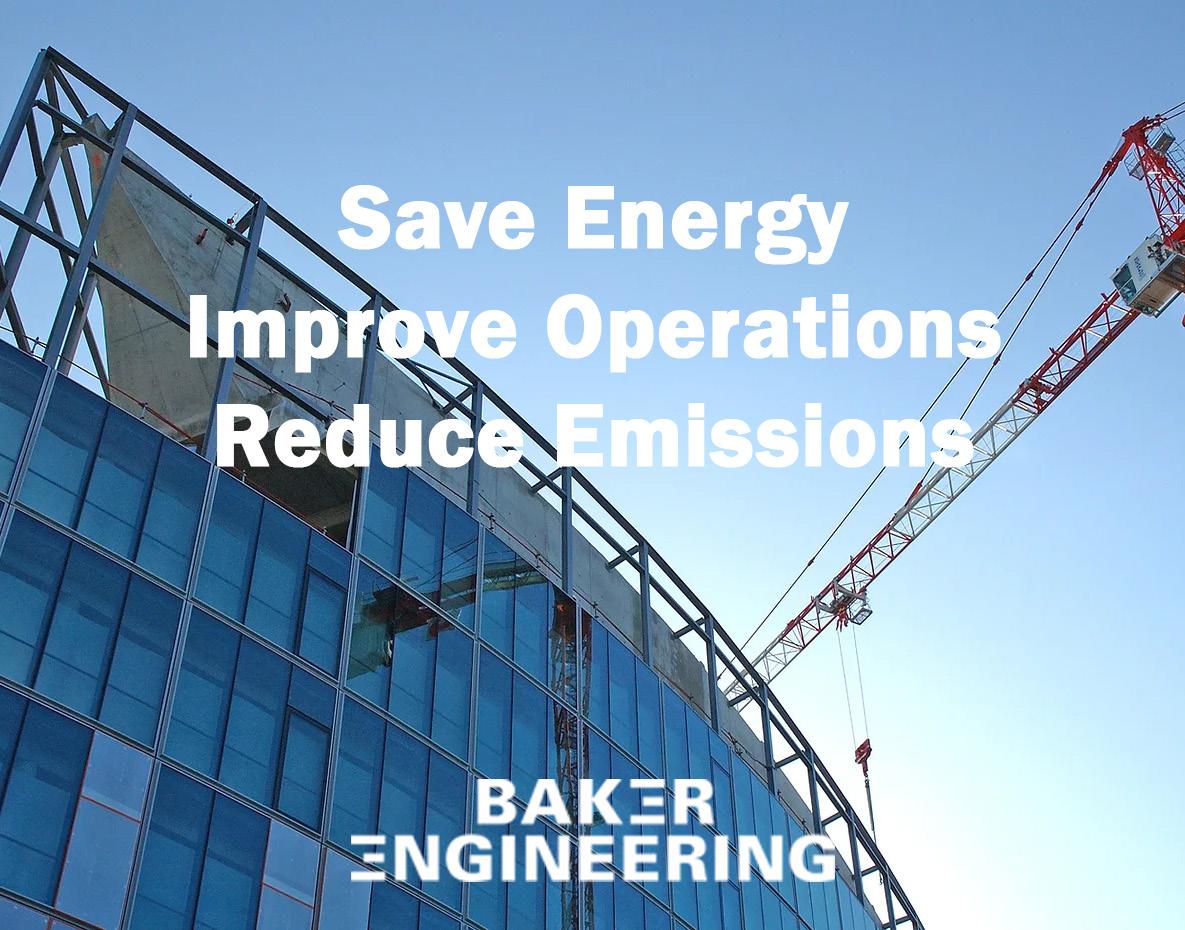


Scott has more than 20 years of experience in HVAC systems design, operations review, and commissioning.
Scott has a Bachelor of Science in Mechanical Engineering Degree from the Georgia Institute of Technology.

Environmental Stewardship is embracing a responsibility to protect and improve our environment by implementing sustainable practices.
Everyone’s actions affect the environment in one way or another, including commercial buildings so why not utilize environmental stewardship as a catalyst for tenant engagement, reduced maintenance, and lower costs?
Urban beekeeping is sustainable, educational, and engaging for tenants. Lee-Kathryn Bonner, founder, and CEO of Bee Downtown, recalls how excited employees and tenants get about their corporate hive program where tenants are invited to engage and learn about the bees.
One of our property management groups, Accesso Club, in Atlanta. The first thing a new employee at their company does is they go to see the bees and they’re so proud of having their bees on the campus” explains Bonner.
The on-site nature of this engagement allows more team building opportunities as well as an environmentally friendly workplace.
According to Forbes, many tenants today want to work and live at environmentally conscious buildings where owners and managers are intentional about the sustainable practices they choose to be a part of. Urban beehives are an amenity allowing people to connect to agriculture in a safe and controlled setting.
Bonner adds, “For many people, it’s the first time they’ve ever been invited to experience agriculture and it’s presented in a really fun way where they’re not in charge of the bees because it’s a skilled agricultural entity facilitating the event.”
With companies like Bee Downtown, property owners and managers can purchase programming packages where a beekeeping organization will facilitate educational programs aimed at team building. This can include candle making, honey tasting, hive tours, and more.
Beehives in commercial real estate are an investment but the benefits are plentiful with tenant engagement, LEED certifications, environmental impact, and more.
Urban beehives can increase environmental stewardship for tenants and managers as well as engage tenants to participate in exciting experiences.
“WhatwereallyfocusonatBeeDowntownisgettingpeopletolove wheretheyworkandlovethebeesandtheenvironmentatthesame time”says Bonner.
Community gardens in commercial real estate are a fantastic way to increase tenant engagement and provide fresh produce for tenants and visitors. For example, a commercial property with multiple restaurants may benefit from on-site produce gardens.
Conventional gardens require large allocations of space, which can come at a premium in many commercial spaces. Vertical farming is an excellent solution when space is tight.
Hydroponic, aquaponic, and aeroponic farming technologies are all methods of vertical farming used in urban landscapes. These techniques differ from conventional farming due to their lack of soil. Vertical farming also requires significantly less spaces than conventional farms.
These techniques are time and yield efficient while using a fraction of the resources required for conventional farming. Hydroponic and aquaponic systems also differ from conventional farming methods because they utilize submersion techniques where the roots of a plant are fully underwater to absorb the maximum nutrients.
Many vertical gardens and farms are housed indoors lowering the impact of climate considerations on what your property chooses to plant. Indoor farming allows for increased flexibility in where these systems are located on your property.
Their vertical nature also saves space and is adjustable to meet various measurement location considerations such as in a lobby or recreation area.
Vertical farming can be another added amenity for tenants in commercial properties. Tenants could have access to fresh produce regularly or participate in educational or team building programs similar to urban beehives producing honey for tenants as well as educational opportunities.
Additionally, pollinator centric gardens are a fantastic way to attract pollinators like honeybees and butterflies with aesthetically pleasing vegetation. Luckily, pollinators appreciate a variety of colors so planting a variety of native species with a diversity of colors will help attract pollinators and create a balanced and beautiful habitat.
In the Southeastern United States, wildflowers such as Golden Alexander and Butterfly Milkweed are native to this region and are pollinator friendly. In the Pacific Northwest, native flowering plants like Selfheal and Large-Flowered Collomia are perfect for attracting pollinators.
In the Midwest region, Pale Purple Coneflowers and Wild Geraniums are ideal for pollinators. Being intentional about planting native species that are beneficial to pollinators is not only helpful to biodiversity but also cost effective. Native plants require less water, pesticides, and fertilizers and require lower maintenance.
Once your vertical or pollinator garden is in place, the next step in a comprehensive environmental stewardship plan is addressing the migratory bird populations.
Have you ever had a bird fly into your window? When a bird collides with a window it can be frightening and unsettling for tenants and staff. Tall buildings with large windows can confuse migratory birds because of their transparency.
These birds may collide with windows, resulting in their injury or even death, as well as a horror story for the unfortunate person working behind the window.
Tall buildings can also block bird’s migratory movement, leading to irregular reproduction patterns and displacement, affecting other flora and fauna in an area.
“Somewhere between 350 million and one billion birds every year in the US alone die from running into glass. It’s not just large commercial structures, it’s small commercial structures and its residential properties” explains Adam Betuel, Director of Conservation at Georgia Audubon.
Properties can avoid this through treating your windows with fritted, etched, or UV-glass. Fritted glass has printed designs or patterns on the surface of the glass that can serve as a visual cue to birds that the window is solid.
Etched glass utilizes of abrasive materials to create a pattern or markings into a piece of glass to give it a translucent white finish. UV-coated windows utilize an opaque film to block solar rays, rendering them visible to birds.
All three of these treatment options have an added benefit of reducing the cooling costs in a building by reflecting or blocking heat.
“The American Bird Conservancy and other groups recommend something called the two-by-two rule. This means you need some kind of visual cue every two inches horizontally or two inches vertically to stop a bird from trying to fit between those markers.”
Another way to prevent or reduce bird collisions is altering lighting in buildings. Betuel explains that building owners and managers can save energy by installing motion sensors or timers on their lights and help prevent bird collisions as well.
Reducing the light in a building, especially at night, will prevent birds from being attracted to commercial buildings.
Migratory birds have specific ecological benefits like pollination, seed dispersal, pest control, and more. Their survival across long distances is already difficult, and urban development is an obstacle that can be directly addressed.
An estimated 350 million to 1 billion birds die from building collision annually but that number can be reduced with alterations to glass such as fritted, etched, or UV treatments and reduction in light use with motion sensors and timers.
“Themainthingisyoumustprovidethatvisualcue attherightspacing”explains Betuel.
Environmental stewardship focuses on environmentally sustainable improvements that can make a large impact on our communities. Being a steward of the environment refers to being conscious and considerate about our influence on the environment and making an effort to reduce any negative effects.
Protecting local and migratory bird populations can help protect your community from pests, reduce your property’s impact on local wildlife, and allow the community and tenants to enjoy the birds who help define the area’s we inhabit.
Tenant retention and engagement is a huge part of owning or managing a commercial property. Many prospective tenants today are looking for environmental stewardship in their workplace.

Urban beekeeping, vertical gardens, and conscious building practices are only a few ways property owners and managers can engage in environmental stewardship to enrich their tenant’s experience at their property and lead their community’s sustainable development.
Urban beekeeping and gardening help enrich tenant experience by making educational and team bonding programs readily available while being sustainably conscious. Altering windows and lighting in buildings not only helps migratory birds but also helps reduce energy costs and improve a building’s sustainability.

ENERGY STAR® is an important program for buildings and their owners, engineers, and managers. Ninety percent of American households recognize the ENERGY STAR® label as a marker of energy efficiency on buildings, appliances, homes, lights, and more.
But what is ENERGY STAR®?
First and foremost, ENERGY STAR® is a program to certify energy efficiency backed by the United States Government. This important program raises the bar on environmental savings. Run by the U.S. Environmental Protection Agency (EPA), thousands of industrial, commercial, utility, state, and local organizations partner with it.
ENERGY STAR came about in 1992 when it was established by the EPA. It operates under the authority of the Clean Air Act of 1963 and the 2005 Energy Policy Act.
Since its inception, ENERGY STAR and its partners have helped Americans save over 5 trillion kilowatt-hours of electricity, 4 billion metric-tons of greenhouse gases, and avoid $450 billion in energy costs.
ENERGY STAR has been a remarkable program during its nearly 30-year lifespan, and one of its greatest achievements are ENERGY STAR® Scores.
For buildings, ENERGY STAR is used to benchmark building energy efficiency and use data. This data is compared between like buildings using the Commercial Building Energy Consumption Survey (CBECS).
CBECS data is generated by periodic EPA surveys. CBECS samples multiple classes of buildings in the U.S., with the 2018 survey tallying over 16,000 buildings’ performances.
CBECS data is then used to calculate ENERGY STAR scores and provide ENERGY STAR certifications based on the 1–100-point scale. The national average in energy efficiency and performance is always 50, and to be ENERGY STAR certified, a building must receive a score of 75 or higher.
The first step to receiving an ENERGY STAR Score is benchmarking. Using the ENERGY STAR Portfolio Manager, you can input emissions, water, and energy use data. After a year of benchmarking, your data is compared to the CBECS data set, and then given a score showing a building ranks on the national curve.
If a property’s score is lower than desired, don’t worry. The ENERGY STAR Portfolio manager will show exactly how much your building needs to save to hit your energy saving targets and improve your ENERGY STAR® Score. But what can you do with an ENERGY STAR Certification?

ENERGY STAR Certification requires a score of 75, putting the building in the 25th percentile for energy efficiency. This certification can lead to further certifications such as Leadership in Energy and Environmental Design (LEED). An ENERGY STAR certification is the minimum for LEED certification, and it only goes up from there.

LEED currently has four tiers, which look at a building’s energy efficiency and sustainability in categories such as design, renovations, operations, and construction, among others. The first tier is LEED Certified, which is 40 – 49 points during certification. Silver is next at 50 – 59 points, then LEED Gold at 60 – 79.
The final and highest tier of LEED certification is Platinum for scores over 80 points. Platinum certification is given to only the highest performing buildings, and two excellent examples are 101 California and 1180 Peachtree.
101 California is a 48-story office skyscraper located in San Francisco, California. It was completed in 1982 and is sized at 1,250,000 square feet. It earned an ENERGY STAR® score of 91 in 2020, putting it in the 9th percentile for energy efficiency nationally. 101 California received its first LEED Platinum certification in 2014, receiving the highest LEED score in the world at 94 points.
101 California encourages sustainability through electric car charging stations, free e-waste recycling pick-up and boxes, responsible materials selection, water use reduction, and energy efficient operations and design.
This San Francisco landmark will begin receiving renovations to the lobbies, plaza, and amenities in the coming months. These renovations are expected to continue into 2023, and we are excited to see what new sustainable solutions they incorporate.
1180 Peachtree is a 690,835 square-foot, 41-story office building located in Atlanta, Georgia. Also known as Symphony Tower, 1180 Peachtree was completed in 2006 and received its first LEED certification shortly after. It received an ENERGY STAR score of 90 in 2020, placing it in the 10th percentile of energy efficient buildings in the U.S.
Symphony Tower became LEED Platinum certified in 2015, and it was the first high-rise office building to receive LEED Silver in Core and Shell, as well as being the first in the southeastern U.S. to achieve LEED Gold certification in core and shell.
It has a unique water management system that uses captured rainwater and condensation to provide 100 percent of the building’s garden irrigation. Its enhanced indoor environmental air quality, green spaces, and energy efficient operations make 1180 Peachtree extremely sustainable.
101 California and 1180 Peachtree stand at the pinnacle of sustainable building design and operation, and theirs is an excellent example to follow, but don’t be dissuaded by the best of the best.
Through ENERGY STAR® and LEED programs, your building can increase its ENERGY STAR® Score and rise through the ranks of LEED over time. Neither of these buildings became LEED Platinum or ENERGY STAR® Certified overnight. It was a process, and that process starts one step at a time.
• ENERGY STAR®
•
Information Agency, CBECS |
•
Peachtree
•
•
In my home state of Georgia, daffodils shine bright yellow in the morning sun like little heads looking around announcing the beginning of spring until old dogwoods and azaleas explode into whites and pinks in mature stately landscapes, our country offers some of the most beautiful sights on the planet.

Keeping our country beautiful is not a passive pursuit. Actions must take place to sustain our planet and our property managers and owners, are always searching for new ways to protect our environment and reduce the impact the built environment has on our beautiful state.
One of these options is through third party programs where properties can become certified for green or healthy building practices. These third-party certifications identify companies practicing sustainability programs such as ENERGY STAR, LEED and BOMA 360 and creating healthier buildings for their prospective tenants utilizing principles from WELL and Fitwell.
Keeping our country beautiful is not a passive pursuit and building an environment of excellence is key in maintaining our beautiful nation.
“It gives people confidence in how the buildings operating that they are working at in a good environment where the ownership cares.” Explains Chris Lelle, portfolio chief engineer at Lincoln Properties.
“They can be healthy, and they can be more productive in the building. It really does demonstrate that you are doing the right things in the building. We should always be good stewards of our environment and efficiency.”
“It’s not just a marketing thing for our leasing agents, but a lot of customers are really jumping on the sustainability bandwagon and even here very recently I’ve had several customers reach out to me because they’re implementing their own new sustainability practices and they’re looking at Portman to guide them in that direction,” says Michael Knox, chief engineer at Portman Management.
“They want to know what other customers are doing and the building, in terms of sustainability and how can they be a part of it?”
“I think the big thing that I’m seeing right now is the customer drive towards sustainability. The companies are becoming more involved and are looking for answers from management and building owners to see what they can do and what the property owners are going to allow them to do, within their own spaces at the properties. I think that is the big driver right now.” Knox continues.
Charlie Cichetti, CEO with Green Building Education Services (GBES) explains further, “The reason you go for an ENERGY STAR or LEED certification, for some of my clients, is to get that 3rd party validation that this is a Green Building and that is going to help us with our valuation.”
“it is going to force us to reduce our operating costs, it may be more attractive to certain tenants and I know a lot of Fortune 500 companies will only lease space in a Green Building.”
“While LEED is all about how your building’s impacts the environment, WELL certification is focused on your building’s impact on the people in the building.” Cichetti explains.
“For example, the lights in the room, if it is a LEED project, we want to make sure they are energy efficient, and we reduce our carbon emissions.”
“But if it is a WELL project, those lights can affect how we sleep tonight and circadian rhythms. A WELL certification ensures that this is a healthy space. It answers, is this a healthy building or not?” Asks Cichetti.
“WELL philosophy would have buildings lighting systems dim as the evening hours progress to naturally help the body prepare for winding down from the day and prepare for sleep.”
“Then you have BOMA 360, which compliments these other certifications. It is well rounded. BOMA 360 is a good place for a building to start in exploring different certifications.” Cichetti adds.
While these certifications have become a big part of our built environment conversations in Atlanta, these designations are not as easy as signing off on a few improvements. It will take effort and most importantly, it will take a whole team doing their part.
Everyone will have a unique role to play from the building owners, managers, to the engineers, tenants, and the vendors who support management team at properties.
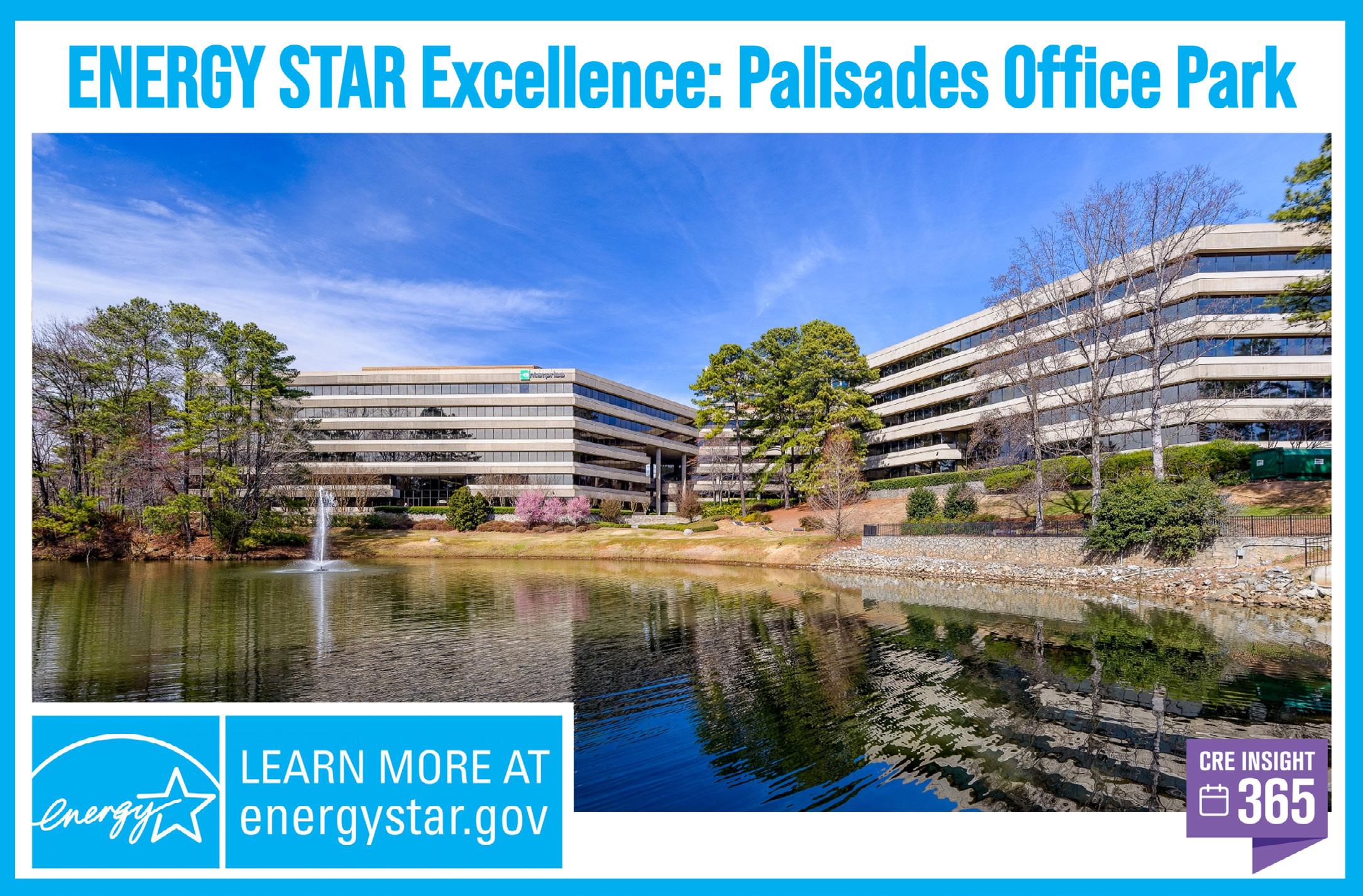
“Everybody has to buy in to it. Everyone has to buy in to the goal. And part of what we have to do to achieve that goal is to fully understand the timeline for achieving the goal.” Knox explains.
“Everyone must be aware of what resources are we going to have to pull from to ensure we meet that deadline. It is a lot of information that has to be collected and everyone has to understand their role.”
“Teamwork is critical to making sure that any data and information is flowing in the right direction. There needs to be a gatekeeper. Somebody who collects all the data from all the different teams and forwards that information to the certification entity. Teamwork is essential in anything we do in Property Management is and this is no different.” Says Knox.
Lelle explains the importance of teamwork for achieving building certifications. “The certifications are really multi-faceted. They involve many disciplines to accomplish. Property management and engineering alike.”
“Property managers work directly with the janitorial companies, so you have to understand where they are getting their paper supplies, what type of paper supplies are you using.
That can help just as tracking your waste and understanding if they are recycling properly. They need to look at what chemicals are being utilized to clean and ensuring HEPA filters are being used on the vacuums.” Lelle says.
Part of keeping our country beautiful comes from partnering with excellent product and service providers who can provide sustainable solutions to property managers and building engineers.
“Our vendors have to provide us with the products to meet these certification requirements. If they are green cleaning products; we need to make sure that [the products] follow the checklist of what chemicals are allowed and not allowed within the buildings.” Chris Lelle explains.
“Vendors need to be sourcing things from environmentally or sustainable sources that we are looking for the correct recycle products.”
“We need to be assured we are not just grabbing the cheapest stuff off the shelf just to save money. We are finding that mix of what is going to be affective and environmentally friendly across the board. And finally understanding the touch points they are cleaning around the building.” Lelle says.
“Meanwhile the Engineers will as a team, be looking at the sinks, all the flush valves, looking at the entire plumbing set up to understand usage. Are you continuously operating the HVAC systems in an efficient manner? Are you upgrading the lighting?” Says Lelle.
Charlie Cichetti agrees, “Teamwork is definitely even more than just the facility management of the property management team.”
“I think you should bring in outside vendors and consultants to coach and quarterback. Hey, here’s what we’re going to need to do. We need to do this, and this is to improve our green operation. Then we have to prove it to someone that actually doesn’t come to our building, so we have to have pictures and narratives and documentation.”
“So, to the Engineer: I need you to take weekly water meter readings for this period and to the landscaping vendor, we really need you to button up your monthly reporting. Are you composting the grass clippings? Are you using low decibel leaf blowers?” Cichetti continues.
“[Engineers] are doing many of these best practices and we have to display it to ownership and certification groups, so we all get credit and that’s going to help you and your company too.” Cichetti explains.
“I think you have to rally the team, realize that everybody’s going be responsible for a part of a green building or healthy building certification.”
“And then we like to have check-ins every two weeks. We ask how are we doing with those initiatives? And when we do finally submit [for certification] we celebrate as a team. I think that’s part of it. It is one thing to name who’s got what. Who’s being held accountable is another thing.”
Cichetti adds an important reminder. “Don’t forget about the tenants. There’s a lot of optional points if we do recycling audits and we look at a tenant floor and we say, you know what, this tenant is a green champion.”
“You might find another that they’re throwing soda cans in the trash and don’t care. How do we coach them up? Ask them, are they buying ENERGY STAR rated monitors and computers?”
“And if they are, let’s get credit for it. If they are curious, could they buy some greener office supplies? Show them that there’s a relationship we have with an office supply company. Here’s their green Office supply catalog. You might want to take a look.” “Education is a major part of this recognition and plays a role in these certifications.” Cichetti adds.
Many of our properties here in Atlanta have already been through these certification processes, but what if you and your team have not? How do we determine what certification program is right for our building?
How does one begin the process of becoming certified? What do we need to know or look at to become certified or get ready for that process?
Cichetti answers. “What I tell people is if you are wanting to go for official LEED EB (Existing Buildings) certification, there are three things that hold up most buildings: Energy, Water, and Air. So we want to make sure our ENERGY STAR score is at 75 or higher.”
“You have to be energy efficient at this point, and LEED won’t tell you that you have to switch your lights to LED. I It is up to the team to figure out the right combination to get to that mark.”
“When it comes to water, look at the current infrastructure. You may not need to swap out every toilet and urinal fixture to reduce water consumption but take a look what is going to get you there.” Cichetti says.
“With air, it is not just about installing MERV 13 Air Filters. It is about bringing in fresh air when the building is occupied and doing some testing out on the floor for other contaminants. If you can get the energy, water and air, the rest of it is green cleaning, green pest control, recycling and the other green best practices.” Says Cichetti.
Lelle, from an engineer’s perspective, adds, “LEED is really certifying what we are already doing in our buildings, you have to have a good preventive maintenance program in place, good filtration, such as MERV 13 Air Filters, cleaning the equipment, and make sure that your sensors and equipment are calibrated properly.”
“Ask questions. Are you bringing in the right amount of outside air in the building? If you set up pressurization controls in the building, make sure the building is operating efficiently. Engineers play a large part throughout the certification.”
“We are going through and physically counting the number of faucets throughout the building.” Explains Lelle. “We take note of the flow rate of the aerators on all of those faucets and take note of the gallons per flush on all of the toilets. We look at all of the water sources we are consuming.”
Lelle continued, “We take a look at design criteria on all of the design plans and look up what is my outside air filtration rate that I’m supposed to. We look to see the design parameters for the chillers, for the air handlers, for the cooling towers, so we can look at parts from an optimization standpoint.”
“We have to be able to dedicate the time to locating all of the information and learning and applying it to make sure all of the building systems and equipment are operating as they’re intended to or better.”
“One of the things I would do if your company has multiple properties,” adds Michael Knox, chief engineer at Portman Management. “If you’ve got other properties that have gone for LEED certifications, look at their application, what they submitted, see what they did and then look at your property and see if you can duplicate what they did to earn those same points.”
“No cost, low-cost solutions are always great. But there’s a lot of low hanging fruit in LEED certification, and a good option is to look at other projects that your company may have already accomplished and use that as a guide.”
But how does one know which certification is right for their building? It takes preparation in deciding what direction you will want to take your building such as BOMA360, WELL or LEED Silver, Gold, or Platinum.
It takes research to investigate current practices and the improvements that will need to occur to get a certification at a particular level.
“You have to ask the question to the ownership.” explains Lelle.
“What are the ownership goals? I’m currently in conversation with an owner about what certifications they may wish to have on their building.”
“I had to submit pricing for LEED certification. The owners in turn are talking to the tenants and understanding their level of interest. The tenants are then seeing if this fits their business models of what they need.” Lelle stated.
“In addition to owners and tenants, the others you will need buy in from are the leasing teams. Leasing agents will know if that is something that is being asked for in the market. If your market does not attach value these certifications, it may not be worthwhile to certify. However, you can still follow all the steps and best practices for the certification itself.” Lelle explains.
“These sustainability measures will save money and investing in tenant and staff health through WELL certification will help retain those tenants. It’s give and take based on the market. You still don’t give up your quality of what you’re doing, you just don’t do the certification in that case.” Says Lelle.
Over the last few years, our industry has gone through unprecedented times, so in a post pandemic world, one must wonder what role certifications play now? Charlie answered this for me:
“On the talent side, right, it is a competitive job market right now. If people are being asked to come in to work, at least a few days a week, in this post-pandemic Zoom world, folks are going to be a little more picky.” Says Cichetti.
“They can find a career where their building is a green office. They want it to be a healthy place to work. They want their office to be incredible. They are asking themselves; why would I come in and go sit in a cubicle?” Explains Cichetti.
“From a talent perspective, if I am an employer, I’ve got to shout out: “Hey, we’re going to have a hybrid work policy. Here are our amenities. This is a green office. This is a healthy office. Here is the proof.”
“As far as rent, there is a lot of things colliding on that front. In general, you know some of the premier league properties can still get pretty nice rent premiums. Between the valuation of the building and the rent formula, I think it is still clear [certified] buildings drive a premium for real estate investors.”
Finding the certification that is right for your building helps create a more sustainable and healthier built environment. Certifications, and the best practices that go into them, are a great way to keep Georgia, and your own state, beautiful. LEED, ENERGY STAR, BOMA 360, Fitwell, and WELL all have their benefits.
Getting tenants, engineers, managers, and ownership engaged and onboard for these improvements and changes will help ensure these certifications are put to good use so the next generation can experience the shining daffodils, old dogwoods, exploding azaleas, and the rest of the stately American landscape we all know and love.
Dusty Muck is an Account Manager for Rubbermaid Commercial Products, providing waste/ recycling, cleaning, material handling, and washroom solutions to business in Georgia. In addition to his work with Insight, he works as Ambassador to new BOMA Members and serves on the BOMA Georgia Foundation Board, and the BOMA Government Affairs Committee, assisting strategies on legislative and regulatory matters affecting the commercial real estate industry in Georgia.
As we continue towards the end of another budget season, many of us are moving through a marathon of long hours to create our budgets. We are working to create a budget that meets the needs of the building and the financial requirements of the owners.
All too often we end up with a budget that has just enough money to pay the utility costs, insurance, security costs, janitorial costs, and maintenance costs. There is very little left in the coffers for projects to replace aging equipment or to fix the items we know are nearing the end of their life.
Is it possible that we can use this year to be the start of a new process? Can we look at budgets from a different perspective that will help better the lives of the tenants, the management team, and the owners alike?
The simple answer is a resounding YES! What does this entail you might ask? It involves looking at the budget as a road map to manage the property the way you need to.
This might sound like a difficult task given that you’ve always included the items that need to be completed only to have them removed year after year due to budget limits. Let’s look at the budget from a different perspective.
Let’s look at it from an owner’s perspective and use the items we know we need to complete as investments.
Our year one investment approach to the budget needs to include items and projects that have a short payback of one year or less.
Such a short payback seems like a daunting task, and we often think that there are not many things remaining to do at our properties that have such a short payback.
This is the part where we need to get creative and look at things such as our staffing levels, staff experience, tools on hand, upcoming maintenance, equipment review, and recent energy audits.
All energy savings projects that you can include in the budget need to be implemented as soon as possible in said budget to allow for maximizing the recovery during the budget period.
Some additional budget considerations you need to consider are tenant caps on controllable/ noncontrollable items, tenant base year expenses, and amortization of energy savings costs.
Amortizing projects that result in energy savings is a way for an owner to recover the expense for an allowable capital project over the useful life of the equipment.

Let’s look into a few examples of ways to create investments in year one. Inventory all motor controllers for your pumps and fans. If you find that you have motors that do not have variable frequency drives (VFD), plan to install a VFD as soon as possible.
A cost-effective approach in year one for pumps is to run the VFD at a fixed speed that meets the system flow requirements. This is accomplished by opening throttled vales fully and then setting the system flow rate by adjusting the VFD speed.
You can order a Pete’s Plug test kit for less than $300 that will allow the inhouse engineering team to balance the water flow to design requirements which will offset testing and balancing expenses.
For motors on air handling equipment, investigate the static pressure setpoint and make sure you have the correct setpoint and adjust the variable drive as necessary. When you are calculating the payback for VFD installation, make sure you include all available rebates. Remember that a 10 percent reduction in motor speed saves about 27 percent in energy use!
From a HVAC maintenance perspective, do you have chillers and SWUD units? If you do, a great way to save is by cleaning the chiller and SWUD tubes in house. The equipment necessary for the work can cost over $3,000 but this is a one-time expense that will pay dividends.
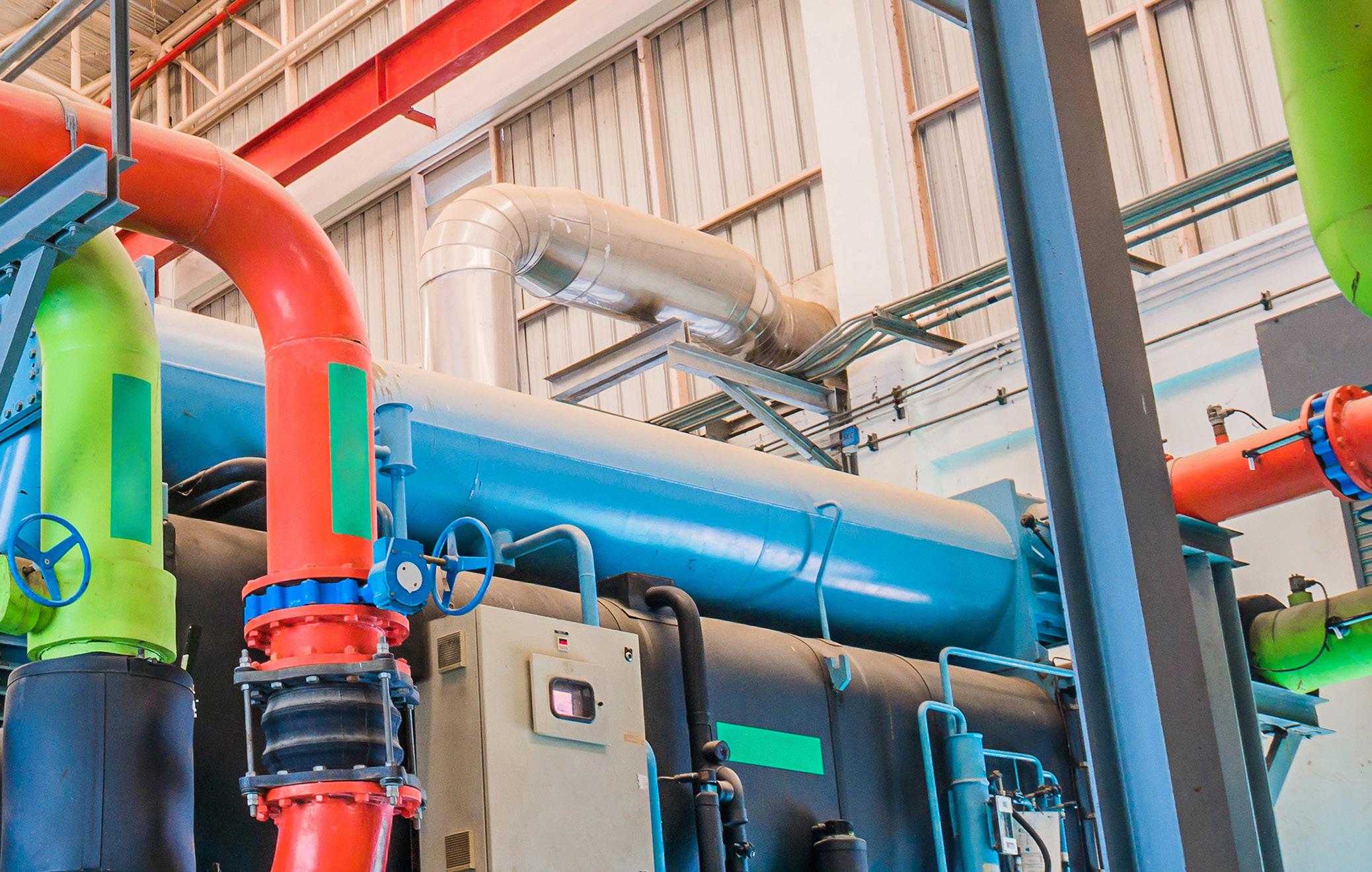
You will need to budget for overtime labor for the engineering team, but this is a task that a well-trained team can perform. If the property doesn’t have the money to purchase the equipment in year one, it may be possible to split the cost among a group of properties.
Technology is becoming a great way to offset labor and to perform tasks that people can’t. One of the best uses of technologies from an investment approach is to implement analytical software, often referred to as “AI” or “artificial intelligence.”
The AI software platforms are great at improving utility use efficiency. AI systems added to the building automation system or BAS can monitor all equipment in the building to ensure that all setpoints are properly maintained and that equipment is running only when it is supposed to.
AI on a BAS has less than a one-year payback if the correct system is installed. This can allow for you to budget the expense as a direct offset to the electricity account. A great benefit for AI on the BAS is better HVAC system performance which leads to fewer HVAC complaints thus freeing up the engineering team’s time to complete other projects in-house which creates additional savings.
Another use of AI is for controlling irrigation systems. A proper AI platform for irrigation control monitors the actual soil moisture and salinity content and develops an efficient watering schedule to maintain the necessary moisture content for both the soil type and the foliage type. This is another system that has less than a one-year payback.
Cost-saving measures are easily identified in utility improvements but can also be found in proper maintenance programs. This can include items like tree care. Does your property have trees that are aging? Even if it does not, the trees require maintenance to keep them alive and looking great.
It is important to consult an arborist to review your trees and create a management plan. Items like soil injections and pruning will result in fewer die-outs and emergency calls to remove dead limbs.
Another group of maintenance items that can cost you less in the future by paying a little more today is HVAC maintenance. This includes water treatment and preventative maintenance. Water treatment is a small cost in the overall budget but can end up costing you a lot if a proper program is not in place.
A great program minimizes the impact of scale and microbiological growth. A poor program will cost you more in energy expenses and in replacing corroded equipment and piping components.
A proper HVAC pm program will help diagnose problems before break downs and expensive repairs are needed. It will also help keep equipment operating efficiently which saves on electrical expenses.
The previously mentioned examples are items that can be implemented in year one with minimal to no impact on the overall budget. The key is that the property team needs to understand the importance of these items and demonstrate the financial impact to the owners.
Once you make it through year one, you are on your way to creating a reinvestment budget. You can use the savings that you are realizing and apply them to more projects that will improve the property, engineering team efficiency, and tenant experience. Here’s how.
The money that you saved on buying the chiller and SWUD tube cleaning machine can go towards adding the VFD’s to the BAS and letting them automatically vary their speed to meet systems’ needs. This will further the energy savings.
The savings from less HVAC emergency repairs can be used to paint the back of the house spaces or to upgrade the lighting at the facility to LEDs. Having healthier trees can allow you to improve the overall landscaping for the same budget.There are numerous priorities that can be adjusted to meet the property’s needs once we create a budget that has the flexibility to create savings within itself.

This is known as a reinvestment approach to budgeting. As you create the savings in the budget, you will be able to better control the operating expenses which will add value to the property and improve you and your team’s quality of life.
As we draw near another budget season, this approach may make it much easier to look forward to budget season and your new roadmap to operating the property.
Chris Lelle, C.E.M is a Senior Operations Manager at Lincoln Property Company. In this role, he manages the MEP operations of 2.55MM rsf across a 32 building portfolio. Chris enjoys the challenges of energy savings while improving the tenant experience in the office environment. He has been involved with several buildings where greater than 20 percent energy savings were realized through a variety of operational and capital improvements.
The Inclusive Leadership Certificate Program features a series of four, two-hour, interactive webinars designed to help individuals build skills that are essential to become inclusive leaders. Participants who fully complete a minimum of three of the four sessions will earn an official Inclusive Leadership Certificate.

With the fast pace of change in American society, each generation has grown up in a different world, resulting in social and cultural differences that shape mindsets and expectations. Without the right understanding, these perspectives can collide and cause conflict, even when everyone means well, and wreak havoc on workplace morale and bottom-line results.
In this foundational and interactive session, theoretical, historical and practical insights will be leveraged to present a high-level view of the generations in the workforce and how to bring them together for greater understanding – and more effective working relationships.
Our personal backgrounds influence our perspective. Among a wide spectrum of backgrounds within the workplace, it’s no wonder different perspectives can sometimes cause conflict or misunderstanding … even when everyone means well. It doesn’t have to be that way.
With the right understanding, our different views can serve as our greatest strength. In this session, participants will learn how to break down barriers that divide and build up awareness that unites and empowers all people to create a more inclusive and innovative future.
Emotional intelligence- also known as EQ- is a leadership buzzword, but does it mean? How can you gain or enhance it? Where do you start?
In this workshop, you will gain practical insights and tools to recognize, understand and manage your own and others’ emotions in positive ways that ensure your communications are heard and understood by all members of your team – increasing cohesion, boosting morale, and reducing conflict.

Belonging, a sense of fitting in, is a basic human need that, according to Maslow’s Hierarchy of Needs, is necessary before self-esteem and reaching full potential and optimal performance.
Among a diverse mix of perspectives in the workplace, it’s challenging to create a culture where all people belong and are empowered to thrive yet strive towards a common goal. In this session, you will learn how to design a culture conducive for diversity of thoughts, backgrounds, and experiences while ensuring a shared language and expectation set, and movement towards a common goal.
Jessica Stollings-Holder is a national speaker, trainer, author and researcher who empowers leaders to think differently about differences and turn obstacles into opportunities. Jessica is passionate about helping all people feel understood, included, and valued. She knows how differences can help, not hinder, business. And she helps leaders leverage the qualities that make each member of their team unique into an action plan to make teams more successful.
Sign up today to take part in the nationally award winning Inclusive Leadership Certificate Program
 By: Don Erb
By: Don Erb
In the winter of 2020, I completed two brief videos for CRE Insight Journal relating to sustainability. The impact your company might have on the Triple Bottom Line of Sustainability, articulated beautifully by the United Nations 17 Sustainable Development Goals was on my mind. Very simply summarized, the sustainable actions that people take personally and professionally have an impact locally, regionally, and nationally.
Most importantly and often hidden is the effect that our collective actions have on planet Earth.
For example, I had lobster in Boston at the BOMA International Convention to celebrate my 40th Wedding Anniversary. Now, if the 60,000 inhabitants of Greenland were the only people eating lobster, the seas would be full of them because the supply would outnumber the demand. Unfortunately, the collective appetite for lobster by the planet’s inhabitants puts enormous pressure on the supply. What’s the point?
Except for price, we don’t necessarily see the effect of overconsumption in our community, but it is happening none the less. So, it is with so many aspects of our life on Earth. As populations and demand continue to grow, the planet cannot keep up with what we are asking of her to supply.
Some argue that climate change is a naturally occurring phenomenon that happens through time and that we the inhabitants of Mother Earth are just along for the ride, causing no negative effect that she can’t shrug off.
We are seeing the effects in the form of weather events, record temperatures and topographical changes. All of which affect architecture, buildings and the people that work in them.
Commercial real estate professionals need to be aware of these circumstances and make proactive steps to protect their property and tenants. I see it this way.
If I were on a busy two-lane highway at night and a speeding truck was headed toward me, I guarantee I would not wait to see who was driving before I got out of the way. Neither should you. Neither should your company.
Climate change must still be addressed, whether its natural or not.
Some things are certain. First, the climate is changing, and weather events are becoming more frequent and more severe. According to the New York Post, nearly 1 in 3 Americans experienced a weather disaster in the summer last year, including October’s Bomb Cyclone in the Western United States.
Second, what happens on one side of the world can and does effect what happens on the other side of the world. The COVID-19 pandemic illustrated that point but also illustrated the fragility of the Triple Bottom Line of Sustainability with its interplay between social, economic, and environmental aspects (pillars).
COVID was a socio-environmental problem that the countries of the earth have had to combat with literally every tool known to humankind just to stay in business.
Third, we, the inhabitants of the planet, can improve our future or we can be victims of it. We need to do this by creating personal and professional plans, and by leading by example for our networks and for our commercial real estate peers. Planet Earth has continued to change in virtually every category during the last nearly three years.
There are some wonderful examples of Sustainability Planning and Climate Action Planning available. The first two are directly from the CRE industry and great examples of an industry leader making impactful changes.
Sustainability is a mindset, a way of life, and a lens in which organizations need to plan their future. What it is not is a tidy little package delivered to your home or business like an Uber Eats meal. You need to get started, get your hands dirty, experience trial and error and do it soon.
The first example is Jones Lang LaSalle (JLL). JLL’s 2020 Sustainability Report Sustainability (JLL.com) details their sustainability strategy, goals, and what has been done around the globe to hit their targets. Their plan is great because it explains how they address several of the UN Sustainable Development Goals.
Their annual report breaks down how they are working towards six specific UN SDGs, good heal and well-being, gender equality, decent work and economic growth, sustainable cities and communities, responsible consumption and production, and climate action. It gives statements from the company and links to relevant reports and projects from around the world.
On page 17, they provide specific sustainability targets and measure their internal status towards achieving those goals. It allows the reader to translate the complex into the straightforward.
The second example is CBRE. Their 2020 Corporate Responsibility Report (CBRE.com) exhibits transparency in their operations information, displays their values which creates a sense of accountability, and lays out detailed plans for each tactic along with their intended goals.
The report details CBRE’s three pillars of corporate responsibility, people, planet, and practices. The pillar of “Practices” describes CBRE’s adherence to the highest standards of governance, compliance, and ethics while providing exceptional outcomes.
The exploration of practices looks at the board’s diversity, CEO pay ratio, procurement, and CBRE’s emphasis on ethics.
Their focus on “People” emphasizes a diversity of talent in an equitable, safe, and inclusive workplace. On pages 28 of their report, they address what they are doing in their UK Market to improve Gender and Ethnicity pay gaps.
They are not afraid to show that they have more work to do but understand that erasing the pay gap is good for their employees, good for their business, and sets an example for their peers.
CBRE’s focus on “Planet” begins on page 50 of their report, where they detail their Environmental Sustainability Policy. This includes occupancy programs, their Workplace360 offices, emissions, energy tracking, and more.
In both cases, each company tackles the abstract interaction between various aspects of sustainability and makes a financial and business case for why they are doing what they are doing. They address wellness and diversity and inclusion and governance as well as ethics, human rights, employee retention, corporate culture and how each of these items interplays with sustainability.
Last and by no means least, organizations need to focus on being able to adapt to the ‘new normal’. A phenomenal presentation was delivered by Catherine McCandless, climate change & environmental planning project manager for the City of Boston Environment Department in Boston at the BOMA Sustainability Scholarship breakfast around this resource available at this link (boston.gov).
This report focuses on resiliency and the role of city planning in the sustainability of a city. It is a great look at what adaptive planning looks like. this is the type of planning that CRE needs to participate in and be mindful of.
We will need to choose our development locations more wisely, harden the construction of our buildings to deal with changes the adoption of building codes can’t deal with fast enough, and renovate more thoughtfully with wellness and health in mind.
Now is the time to assure our world view and our business activity at every level takes into account the wellbeing of the coming generations. As the indigenous people from my patch of earth say, “In every decision, consider how it will affect our descendants 7 generations into the future.”
Seven generations from now, what will they think of my effort, your effort, our collective effort?
Don Erb is the owner of Comhalta Facilities Services, and a Senior Sustainability Associate at the University at Buffalo. In his current capacity he assists University student affairs departments to achieve their departmental missions while fully considering the attributes of “the triple bottom line” of sustainability.
Sustainability and efficiency are a major driver in commercial real estate. Tenants look towards greener buildings and ask owners how they are impacting the environment. Owners look towards managers and operators on how to more efficiently use energy and water to save money. Sustainability and efficiency are driving forces in CRE, and numerous resources exist to help industry insiders save.
The United States Environmental Protection Agency, Department of Energy, and ENERGY STAR® have released resources showing how buildings can save resources, time, and money. These resources are all free and available online. There are myriad ways to save, here are a few resources to help.

The United States Environmental Protection Agency (EPA) is an independent agency of the United States federal government. The EPA began its work on Dec. 2nd, 1970 under President Nixon.
The EPA employs scientists, engineers, legal experts, public affairs specialists, environmental protection experts, and more. Through the efforts and research of these professionals, the EPA regularly releases resources to assist in sustainability and environmental protection. Here are a few of these resources:
• EPA Environmental Topics, this page provides a hub for the most popular EPA pages on Air, Climate Change, Health, Location-Specific Information, and more.
• EPA Research and EPA Science Inventory. EPA Research is a hub of research released by the EPA’s Office of Research and Development. The EPA Science inventory is a searchable database of research reports, journals, and presentations released by the Office of Research and Development.
• EPA Regulatory and Guidance Information, the EPA releases and enforces regulations on numerous environmental topics, this page links to further information on the laws, guidelines, and topic areas the EPA regulates.
• EPA Organization Chart, need to speak with a member of the EPA? This resource provides the regional office for your area as well as their phone number.
• EPA’s eGRID – How clean is your electricity? Profiles by Regions, this resource details how your local energy grid produces energy.
• GHG Emission Factors Hub, the GHG Emission Factors Hub provides an easy-to-use set of default emission factors for reporting organization greenhouse gas emissions.
• Information for Owners and Managers of Buildings that Contain Asbestos, this page provides guidance on the federal requirements surrounding asbestos, including renovations, demolitions, and operations and maintenance for asbestoscontaining materials in buildings.
• EPA A – Z Topic Index, this page lists subject topics on the EPA website alphabetically, it includes topics such as Air Quality Analysis, Environmental Economics, Water Reuse and Recycling, and much more.
The U.S. Department of Energy (DOE) is a federal cabinet-level department which manages the United States’ energy conservation, energy-related research, domestic energy production, nuclear weapons program, nuclear reactor production, and radioactive waste disposal. The DOE was formed through The Department of Energy Organization Act of 1977 on Aug. 4, 1977, under President Carter.
The original goal of the DOE was to promote energy conservation and the development of alternative energy sources, and the DOE releases resources in a number of energy related fields. Below you will find a few of their resources:
• Energy Sources | Department of Energy, this resource hub can help explain different forms of energy as well as the way that energy is stored and distributed.
• Better Buildings Solution Center, the Better Buildings Initiative (BBI) Solution Center is an excellent showcase focusing on proven solutions for energy and water efficiency in buildings.
• 2022 BBI Progress Report, the BBI releases progress reports each year focusing on market leadership, innovation and emerging technologies, workforce development, and better information. Over 900 Better Buildings partners have saved.
• Sector Spotlight: Commercial Real Estate
• Sector Spotlight: Industrial
• Building Technologies Office, the DOE Building Technologies Office (BTO) works to encourage the use of cost-effective technologies, techniques, tools, and services. This page gives access to their resources and upcoming events.
• EERE Emerging Technologies: Buildings, this page lists and links to reports on emerging building technologies such as Opaque Envelope Technologies.
• DOE L-Prize Competition, the DOE L-Prize Competition was originally held in 2011 and resulted in the creation of new LED bulbs and their proliferation. The 2021 L-Prize Competition is currently in the prototype phase and is focused on innovating in Solid-State Lighting (SSL) solutions. You can read more about the concept phase of the competition on CRE Insight Journal
• DOE Energy Storage Grand Challenge (ESGC), the DOE ESGC is a program built to accelerate the development, commercialization, and utilization of novel energy storage technologies. This challenge has led to the creation and release of numerous reports and data including the June 2022 Energy Storage Valuation Report.
ENERGY STAR® is a program to certify energy efficiency backed by the United States Government. This incredibly important and effective program came about in 1992 when it was established under President Clinton.
The EPA manages the ENERGY STAR® program, while the DOE manages Home Performance with ENERGY STAR® and provides technical support. ENERGY STAR® regularly publishes resources, webinars, and research. A selection of these resources can be found below:
• Commercial Buildings Tools and Resources, Resources by Audience, Resources by Topic, these page collate all the tools, webinars, case studies, and many other resources published by ENERGY STAR®.
• Trainings: Live Webinars, Recordings, and PowerPoint Presentations by Topic, how do you use the ENERGY STAR® Portfolio Manager? What are the most efficient manufacturers doing? These topics and more are covered in the many presentations and documents provided on this page.
• DataTrends Research, DataTrends are free reports made by the EPA using data from ENERGY STAR® Portfolio Manager. These reports cover topics such as energy savings, water use tracking, energy use benchmarking, and more.
• Energy Information Administration - Commercial Buildings Energy Consumption Survey (CBECS), while not directly released by ENERGY STAR®, the Energy Information Administration’s (EIA) CBECS data is the basis for ENERGY STAR® Scores and building certifications. The 2018 CBECS report is available now.
• Greenhouse Gas Inventory and Tracking in ENERGY STAR® Portfolio Manager, this resource describes how to track and report greenhouse gases in ENERGY STAR® Portfolio Manager.
• How to Benchmark Onsite Renewable in Portfolio Manager, this guide details how to accurately measure and track onsite renewable electricity in ENERGY STAR® Portfolio Manager
• Tenant Space Recognition, this page details the new ENERGY STAR® Tenant Space program for sustainability efforts in leased office space
• Sign up for the ENERGY STAR® Mailing List, want to stay up to date on everything ENERGY STAR® is doing? Signing up for their mailing list is the best way to stay in the know.
For further resources, please check this State-by-State Resource Locator. This resource locator is maintained by the National Center for Manufacturing Sciences and is funded by the EPA. These resources cover a wide range of topics, from asbestos and other hazardous waste to green buildings and lead paint abatements.
These resources provided by the EPA, DOE, and ENERGY STAR® are a great way to learn more about United States energy programs, as well as the many ways you can save.
Join Michael Knox, SMA, LEED GA, BOMI-HP, Chief Engineer, CODA, with Portman Management, as he discusses how he has used ENERGY STAR Benchmarking at his property and the importance of the program.
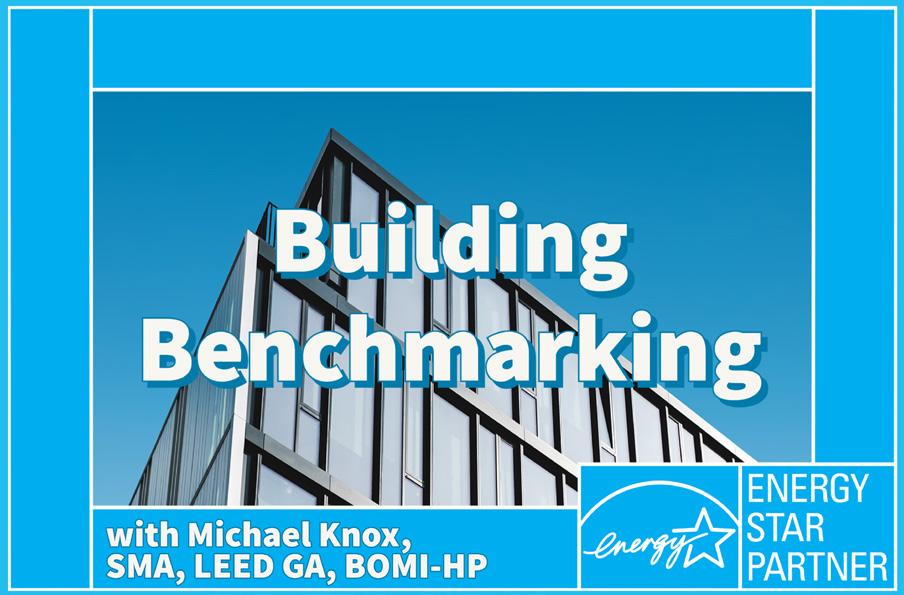
What is daylight harvesting? Join Michael Knox, SMA, LEED-GA, BOMI-HP, Chief Engineer, CODA, with Portman Management, as he explains what daylight harvesting is, and how municipalities are adopting daylight harvesting technologies

Watch Now
Join Mark Graves, Chief Engineer with Zeller, and Laura Campbell, Property Manager with Zeller, as they give tips on accurately reporting your pro perty in ENERGY STAR portfolio manager, where to save, and more.

Watch Now
Join Chris Lelle, C. E. M., Senior Operations Manager with Lincoln Property Company, as he discusses how he uses ENERGY STAR benchmarking, and the benefits the program can bring. Watch Now
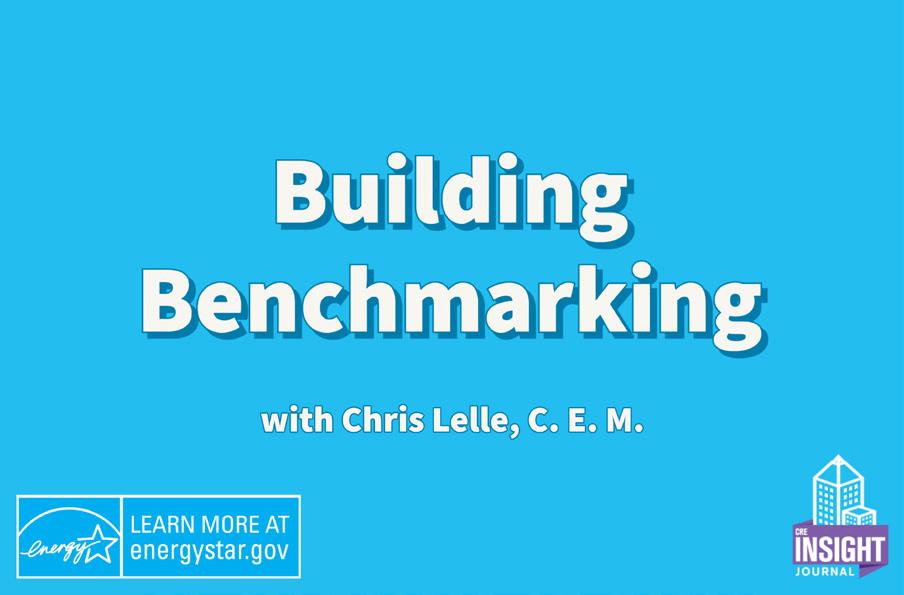
In the journey to energy efficiency benchmarking is an essential step. In this video, Constance Hodges details how ENERGY STAR benchmarking can enhance your building and give you a leg up over the competition.

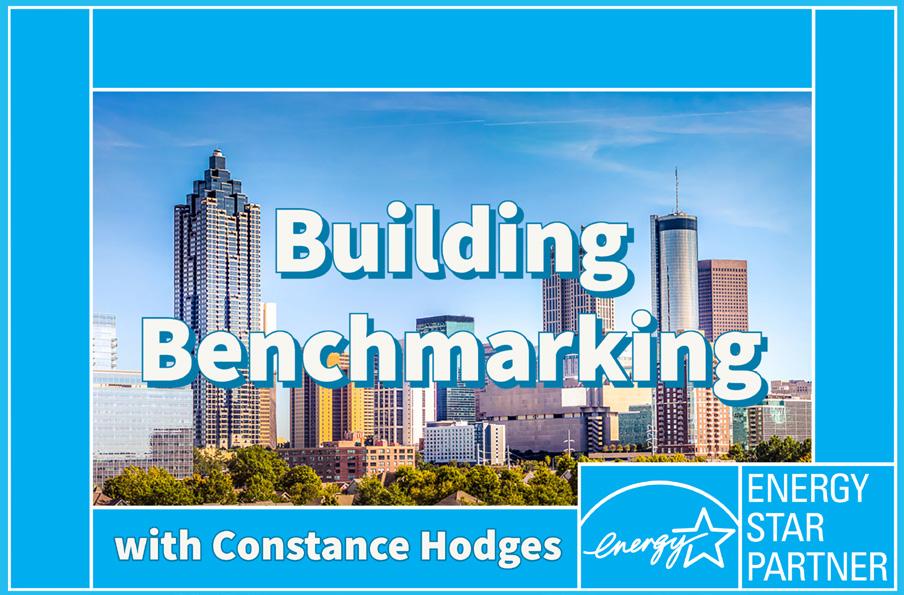
Watch Now
In this video, Joe Sorbet, SMA, SMT with Collaborative Real Estate, explains how his team was able to use that data to enhance their building’s performance and help them along their ENERGY STAR® journey.
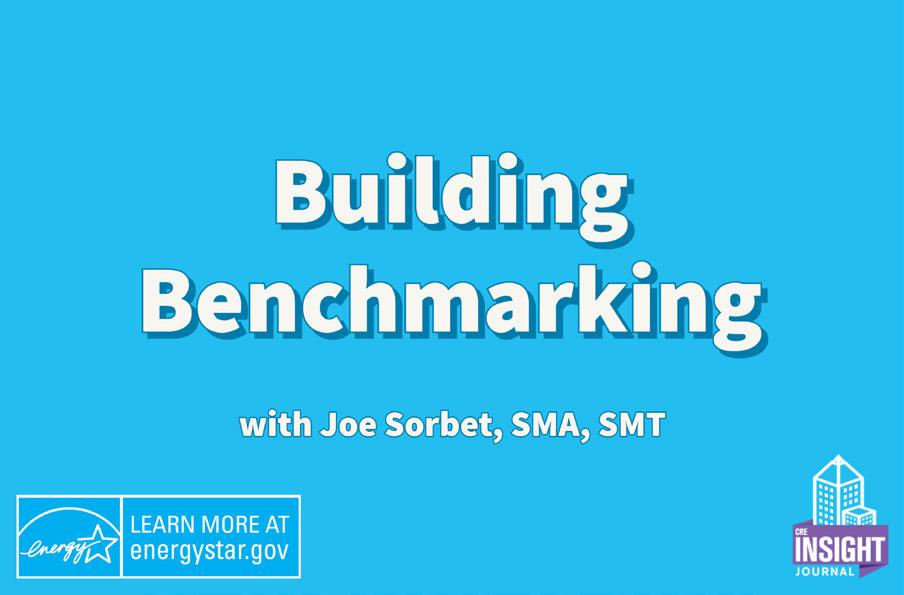
Watch Now
Join Trent Patterson, Corporate Facilities Manager with Havertys Furniture, as he reflects on the necessary mindset for pursuing efficiency and ENERGY STAR excellence.

Watch Now
How has the ENERGY STAR® program impacted commercial real estate? In this video, numerous CRE professionals discuss the impact they have seen from ENERGY STAR.
Watch Now

AAA – Administrative Assistant
ACE – Assistant Chief Engineer
ACI – American Concrete Institute
ADA – American with Disabilities Act, important in the development of building codes
ADAAG – American with Disabilities Act Accessibility Guidelines
AI – Artificial Intelligence, sometimes used in building automation systems or “Smart Buildings”
AIA – American Institute of Architects
AICP – American Institute of Certified Planners
AM – Asset Manager
ANSI – American National Standards Institute, a private non-profit organization that coordinates the voluntary standardization system in the US private sector
AP – Accredited Professional, such as in LEED AP
AP – Accounts Payable
APM – Assistant Property Manager
AQI – Air Quality Index
AR – Accounts Receivable
AREAA – Asian Real Estate Associa tion of America
AREUEA – American Real Estate and Urban Economics Association
ASA – American Society of Appraisers
ASHE – The American Society for Health Care Engineering
ASHRAE – American Society of Heating, Refrigerating, and Air-Conditioning Engineers
ASME – American Society of Mechanical Engineers, develops and maintains the ANSI/ASME A17.1 Elevator Standards, among other things
ATBCB – Architectural and Transportation Barriers Compliance Board
BAS – Building Automation System, an integrated and automated system that controls several aspects of building operation
BBI - Better Buildings Intiative, a DOE organization focused on driving leadership in energy innovation.
BE – Building Engineer, this term is specific to the US South, “Maintenance Technician” or “Maintenance and Repair Technician” are synonymous
BOMA – Building Owners and Managers Association
BOMI – Building Owners and Managers Institute
BOMI-HP – High Performance Sustainable Buildings designation from BOMI
BTO - Building Technologies Office, a DOE organization
BTU – British Thermal Unit, a unit of heat measured by the amount of heat to raise the temperature of one pound of water by one degree Fahrenheit, equal to roughly 1,055 Joules (SI unit)
CAM – Common Area Maintenance
CBECS – Commercial Building Energy Consumption Survey, used to calculate ENERGY STAR® scores
CBRE – Coldwell Banker Richard Ellis
CCIM – Certified Commercial Invest ment Member
CCTV – Closed Circuit Television
CD – (or CDs) Architectural Construc tion Drawings, comprehensive draw ings of a building, also see MEP
CE – Chief Engineer
CEM – Certified Energy Management
CFA – Chartered Financial Analyst
CID – Community Improvement Dis trict, aka BID (Business Improvement District)
CO – Certificate of Occupancy or Change Order
COI – Certificate of Insurance
CPM – Certified Property Manager
CRE – Commercial Real Estate
CRE – The Counselors of Real Estate
CREW – Commercial Real Estate Women
CSC – Customer Service Coordinator
DDOE – US Department of Energy
EBITA – Earnings Before Interest, Taxes and Amortization
EBITDA – Earnings before Interest, Taxes, Depreciation and Amortization
EERE - The office of Energy Efficiency & Renewable Energy, a DOE organization
EIA - United States Energy Information Administration, this organization releases CBECS data used in ENERGY STAR certifications
EPA – United States Environmental Protection Agency,
ESFR – (or ESFR System) Early Suppression, Fast Response sprinkler system, a type of sprinkler system for fire suppression that releases 100 gallons a minute
ESG – Environmental, Social, and Governance, the three headed approach many groups take to sustainability
ESGC - Energy Storage Grand Challenge, a DOE competition to accelerate the development, commercialization, and utilization of novel energy storage technologies.
Esq. – Esquire, denotes that someone is a lawyer (when attached to a name)
EV – Electric Vehicle
FF&E – Furniture, Fixtures and Equipment
FMA – Facilities Management Administrator
GHG - Green house gas
GM – General Manager
GRESB – Global Real Estate Sustainability Benchmark
GUI – Graphical User Interface, commonly referred to as UI
HEPA – High Efficiency Particulate Air, filtration equipment that forces air through high efficiency filters designed to remove 99.97% of air particulates, sometimes referred to as High Efficiency Particulate Arresting
HVAC – Heating, Ventilation and Air Conditioning
IBC – International Building Codes, primarily used in the USA
ICC – International Code Council
IFMA – International Facility Manage ment Association
IoT – (written IoT) Internet of Things, the connected nature of certain technologies such as cloud-based building controls
IRC – Internal Revenue Code
IREM – Institute of Real Estate Management
IWBI – International WELL Building Institute
IWCA – International Window Cleaning Association
KwH – (written KwH) Kilowatt Hours
LA – Lease Administrator
LAN – Local Area Network
LED – Light Emitting Diode, a highly efficient form of lighting
LEED – Leadership in Energy and Environmental Design, pronounced “Lead”
L-Prize - Lighting Prize, a lighting technology competition created by the DOE
LOI – Letter of Intent
LOU – Letter of Understanding, this letter confirms the Lease commencement data after construction
MEP – Mechanical, Electrical, and Plumbing architectural drawings, see CDs
MSDS – Material Safety and Data Sheet, chemical information form explaining possible hazards, these sheets are included with materials that could be hazardous to humans or the environment
NAFA – National Air Filtration Association
NAHREP – National Association of Hispanic Real Estate Professionals
NAIOP – National Association for Industrial and Office Parks
NAREB – National Association of Real Estate Brokers
NAREIM – National Association of Real Estate Investment Managers
NAREIT – National Association of Real Estate Investment Trusts
NCREIF – National Council of Real Estate Investment Fiduciaries
NFPA – National Fire Protection Association, they develop building codes
NNN – Triple Net Lease
NOI – Net Operating Income Formula: Gross Income – Operating Expenses = NOI
NPA – National Parking Association
NPV – Net Present Value
NRCA – National Roofing Contractors Association
PPE – Personal Protective Equipment
PSA – Purchase and Sale Agreement
PSI – Pressure Measurement for water, concrete… “Pounds per Square Inch”
Quad – A measure of energy used by the United States to measure large economies/counties, refers to a “Quadrillion BTU”
REAP – Real Estate Associate Program
REIT – Real Estate Investment Trust
OO+M (or O&M) – Operations and Maintenance
OEM – Original Equipment Manufacturers
OpEx – (written OpEx) Operating Expenses
OSHA – Occupational Safety and Health Administration
PA – Property Administrator
PCI – Precast/Prestressed Concrete Institute
PIU – Powered Induction Unit
PM – Preventative Maintenance
PM – Property Manager (when referencing a person’s position)
ROI – Return on Investment
RPA – Real Property Administrator
SE – Structural Engineer
SI – International System of Units, meter, gram, joule etc.
SIOR – Society of Industrial and Office Realtors
SMA – Systems Maintenance Administrator
SMT – System Maintenance Technician
SPM – Senior Property Manager
SSL - Solid State Lighting

TOBY – The Outstanding Building of the Year, an award given by BOMA Locals around the country.
TSC – Tenant Service Coordinator
UI – User Interface, typically found in computer applications
USGBC – U.S. Green Building Council, this group develops and maintains LEED

UV – Ultraviolet (as found in filters or lights)
VAV – Variable Air Volume
VFD – Variable Frequency Drive
WCR – Women’s Council of REALTORS
WELL – Not an acronym, WELL is a certification focused on the health of the people inside buildings
WPV – Workplace Violence, this ac ronym is usually seen in reference to building security